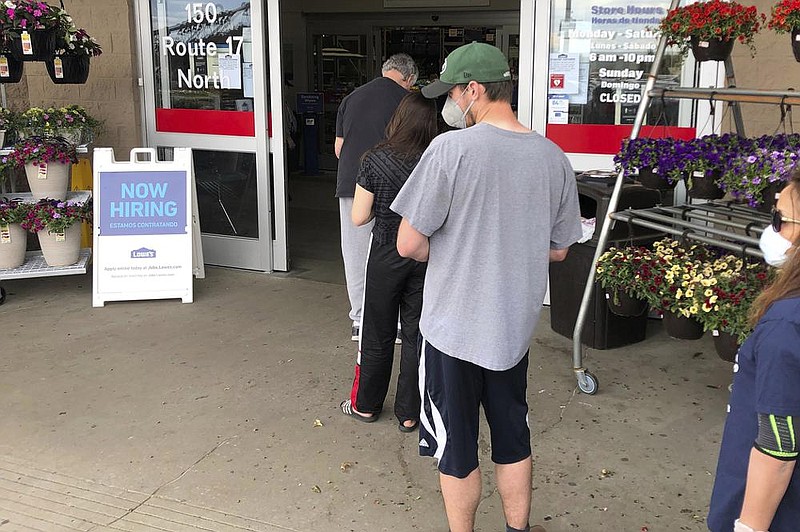WASHINGTON -- The job market took a big step toward healing in May, though plenty of damage remains, as a record level of hiring followed record layoffs in March and April.
The Labor Department reported Tuesday that the number of available jobs rose sharply as well, but remained far below pre-pandemic levels.
The figures from the department's Job Openings and Labor Turnover survey illustrate the whiplash the economy has experienced since the pandemic intensified in mid-March. Layoffs soared in March to 11.5 million, roughly four times the peak during the 2008-09 recession. They remained extraordinarily high in April, at 7.7 million, but in May they fell back to pre-pandemic levels of 1.8 million.
Hiring, meanwhile, plunged in April to 4 million, the lowest level since 2011, but surged a record 2.44 million to an all-time high of 6.5 million in May. While that is the most hires on records dating back to 2000, it wasn't nearly enough to offset the roughly 19 million layoffs in March and April.
The hires rate jumped to an unprecedented 4.9% from 3.1%.
Separations, which include layoffs and resignations, plummeted by 5.83 million in May. The rate of layoffs and discharges dropped to 1.4% from 5.9% in April and closer to the pre-pandemic rate of 1.2%.
Employers advertised 5.4 million jobs in May, about 10% higher than in April, but still below pre-pandemic levels of about 7 million. Job openings that involve workers recalled from layoffs or positions that are offered only internally are not counted in the figure.
[CORONAVIRUS: Click here for our complete coverage » arkansasonline.com/coronavirus]
The increase in job openings was concentrated in accommodation and food services, retail and construction.
Whatever ground has been recaptured to this point is now being imperiled by a resurgence of covid-19 cases throughout the South and West. Despite a solid rebound in employment, the job market remains badly damaged, both by mandatory lockdowns and the reluctance of people to again visit restaurants, theaters or to travel freely, at least until a vaccine or an effective treatment for the virus is available.
The Job Openings and Labor Turnover report provides gross totals of hiring and layoffs, while the monthly jobs report, which also includes the unemployment rate, is a net figure of total jobs gained or lost.
On Thursday, the jobs report showed that employers added a net total of 4.8 million jobs in June, after a gain of 2.7 million in May. Even those huge net gains recaptured only one-third of jobs lost in March and April, and the unemployment rate is 11.1%, down from its April and May levels but otherwise higher than at any time since the Depression.
Finding work remains challenging for the jobless. There were 3.9 unemployed workers competing for every job opening in May. That underscores the current slack in the labor market and stands in stark contrast to a two-year trend in which vacancies exceeded the number of unemployed.
Employers, on net, are adding workers to payrolls, as evidenced by two straight record monthly increases in May and June, according to the agency's monthly jobs data. Yet with demand in many industries only gradually building, many workers continue to get caught up in the economic fallout of the pandemic and the recession it spurred.
Reflecting the varying degrees of reopenings across the regions, the data showed most of the increase in May job listings were in the South, which posted a 200,000 gain from April. Openings increased 126,000 in the West and 60,000 in the Midwest. They were unchanged in the Northeast.
Information for this article was contributed by Christopher Rugaber of The Associated Press and by Reade Pickert of Bloomberg News.
